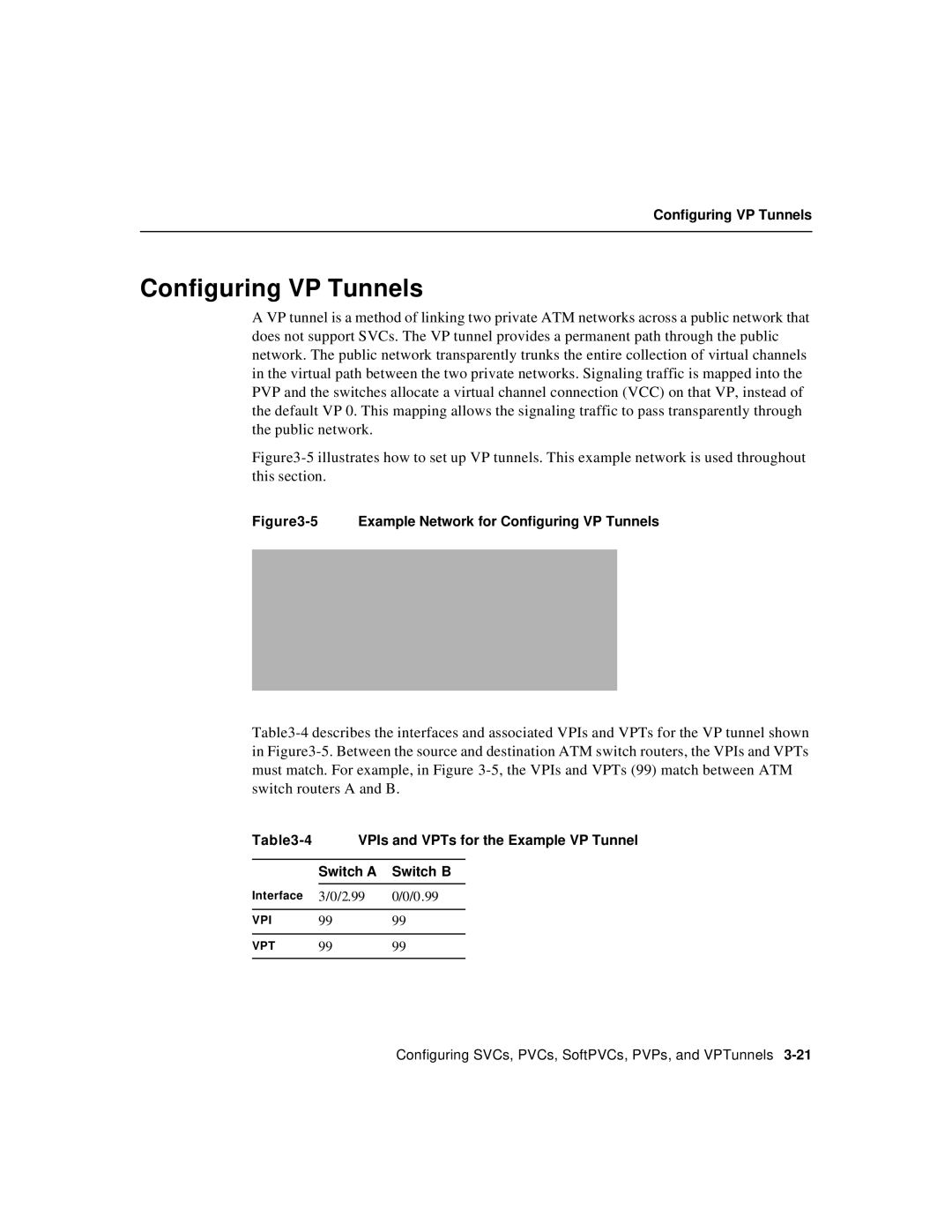
Configuring VP Tunnels
Configuring VP Tunnels
A VP tunnel is a method of linking two private ATM networks across a public network that does not support SVCs. The VP tunnel provides a permanent path through the public network. The public network transparently trunks the entire collection of virtual channels in the virtual path between the two private networks. Signaling traffic is mapped into the PVP and the switches allocate a virtual channel connection (VCC) on that VP, instead of the default VP 0. This mapping allows the signaling traffic to pass transparently through the public network.
Figure3-5 illustrates how to set up VP tunnels. This example network is used throughout this section.
Figure3-5 Example Network for Configuring VP Tunnels
Table3-4 VPIs and VPTs for the Example VP Tunnel
Switch A Switch B
Interface 3/0/2.99 0/0/0.99
VPI 99 99
VPT 99 99
Configuring SVCs, PVCs, SoftPVCs, PVPs, and VPTunnels
